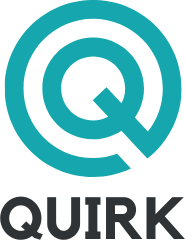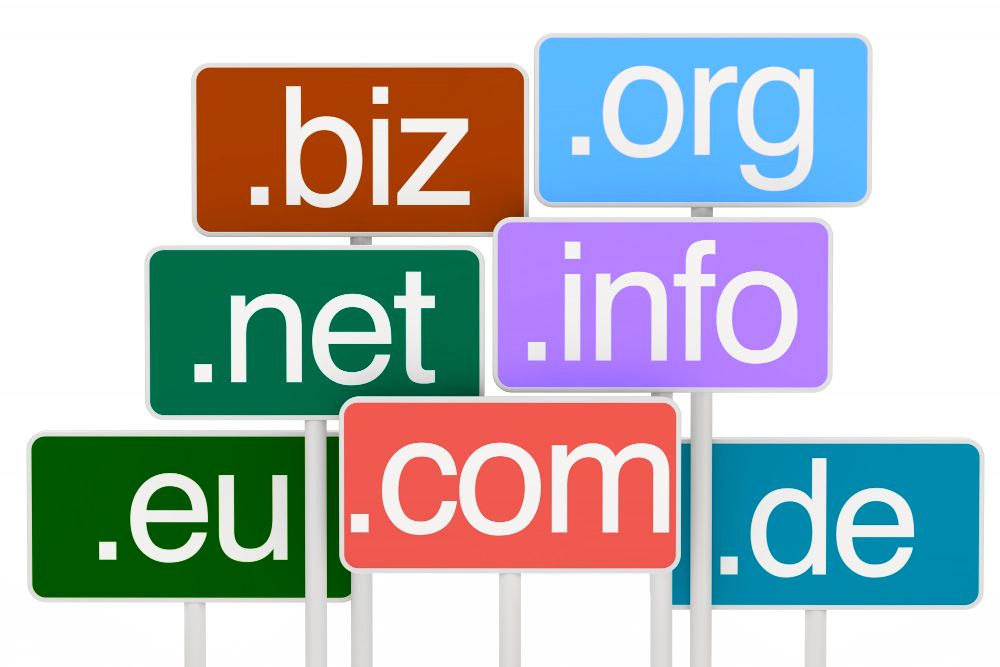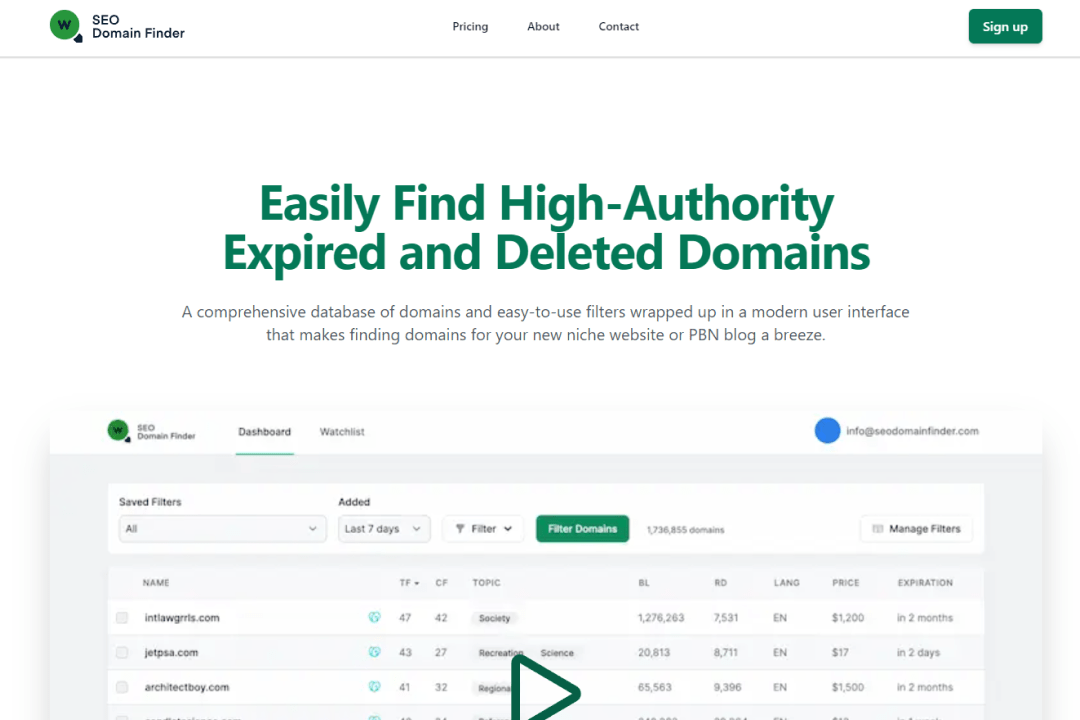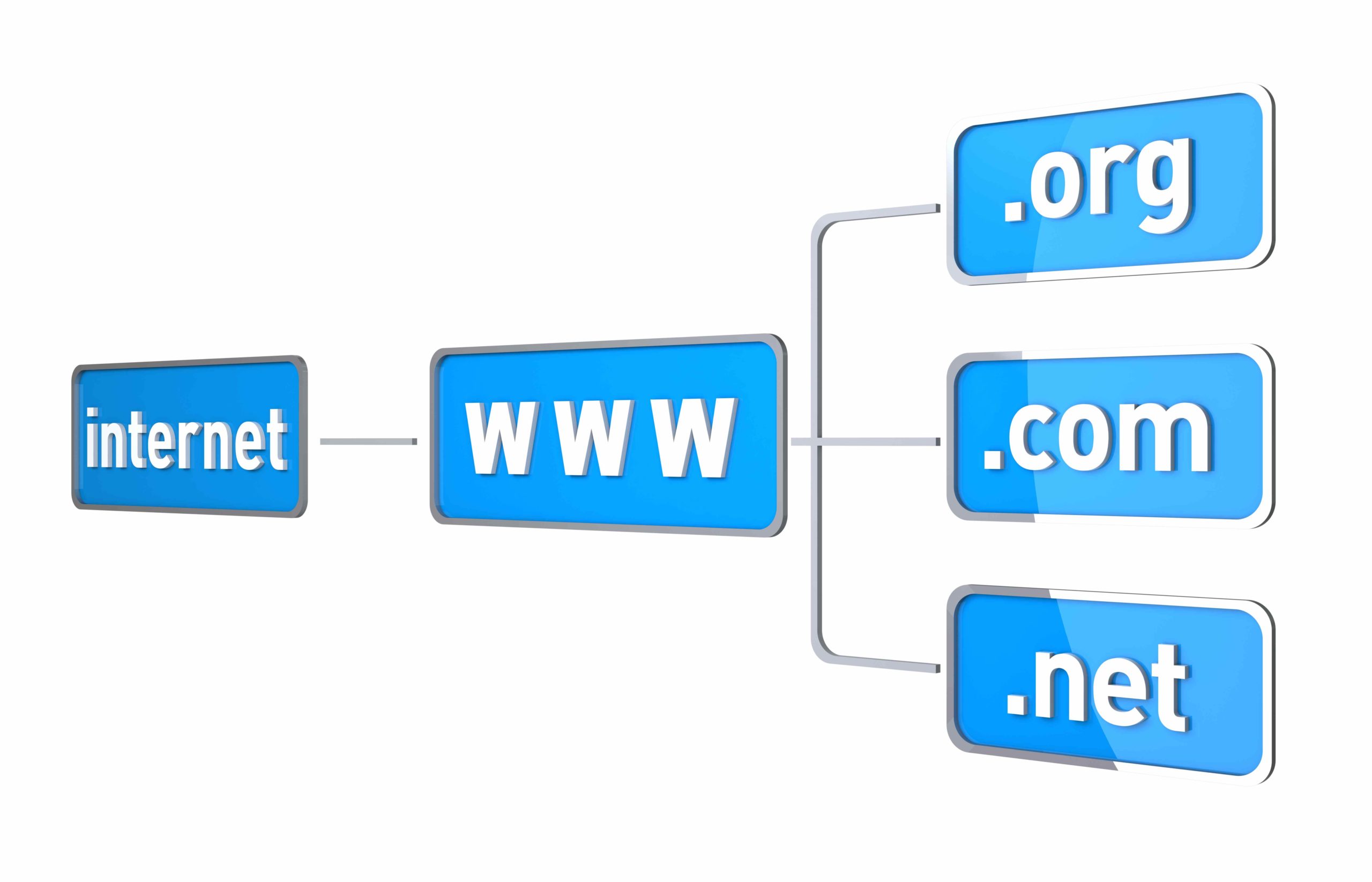
Launching a website involves many important decisions, and one of the most crucial is choosing the perfect domain name.
A significant part of this decision involves selecting a top-level domain (TLD). TLDs serve to identify and categorize websites based on their owner, purpose, or geographic location. With various TLD options available, selecting one that aligns with your vision and purpose is key.
In this article, we’ll help you understand what TLDs are and how they work.
Key Takeaways
- A top-level domain (TLD) is the last part of a domain name, such as .com, .net, or .org, and it helps organize and classify websites, indicating their purpose, location, and content.
- The ICANN classifies TLDs into different types: generic, generic-restricted, country-code, sponsored, test, and infrastructure top-level domains.
- Top-level domains can impact SEO and overall marketing performance, although they are a minor factor compared to on-page SEO and backlinks.
- Some TLDs, like .com and .org, are viewed as more trustworthy, which can influence users’ likelihood to click on your site in search results.
- Choosing the right TLD involves balancing several factors, including relevance, credibility, cost, and long-term growth.
What is a TLD?
A top-level domain (TLD) is the last part of a domain name, such as .com, .net, or .org. Also known as domain extensions or domain suffixes, TLDs are essential for any online marketing strategy. They help organize and classify websites, indicating their purpose, location, and content.
Types of Top-Level Domains
The Internet Corporation for Assigned Names and Numbers (ICANN) classifies TLDs into different types and oversees the Internet Assigned Numbers Authority (IANA) to allocate domain names.
Let’s delve deeper into the various types of TLDs.
Generic Top-Level Domains (gTLD)
Generic top-level domains, or gTLDs, are the most common type of domain extensions and are open for registration to anyone. They include well-known extensions such as .com (commercial), .org (organizations), .net (networks), .biz (businesses), and .info (information platforms).
gTLDs can be up to 63 characters long, with most being two to three letters. Initially, there were only seven gTLDs available, but the number has expanded significantly over time. Some gTLDs are now regulated to ensure they meet specific standards, leading to the creation of sponsored top-level domains (sTLDs).
Generic-Restricted Top-Level Domains (grTLD)
Generic-restricted top-level domains (grTLDs) are managed by ICANN-accredited registrars and require proof of eligibility for registration. These domains are similar to gTLDs but have specific restrictions and purposes. For example, .name is meant for individuals, and .pro is reserved for certified professionals. The restrictions help maintain the integrity and intended use of these domain extensions, ensuring they serve their designated communities effectively.
Country-Code Top-Level Domains (ccTLD)
Country-code top-level domains (ccTLDs) are designated for specific countries and territories, identified by a two-letter string. Examples of ccTLDs include .us (United States), .in (India), .es (Spain), .it (Italy), .fr (France), .uk (United Kingdom), and .br (Brazil). Each ccTLD has an allocated manager who ensures it operates according to regional policies and meets legal, cultural, and linguistic standards. ccTLDs are popular not only among local businesses and individuals but also among large organizations with regional sites, providing a localized and trustworthy web presence.
You can check out our article Generic TLD Vs. Country Code TLD: Which Is the Better Option?
Sponsored Top-Level Domains (sTLD)
Sponsored top-level domains (sTLDs) are proposed and managed by private organizations, such as government agencies, businesses, or community groups. These domains have strict eligibility criteria and are intended for specific purposes.
Examples of sTLDs include .edu (educational institutions), .gov (government agencies), .travel (travel businesses), and .museum (museum organizations).
The sponsoring organization has the final say on whether an applicant qualifies to use the TLD based on predefined community themes and criteria, ensuring the domain serves its intended community effectively.
Test Top-Level Domains (tTLD)
Test top-level domains (tTLDs) are reserved for documentation and local testing purposes and are not available for general registration. They include domains such as .invalid (invalid domain names), .example (placeholders), .test (testing purposes), and .localhost (local networks). According to the Internet Engineering Task Force (IETF), these domains are reserved to prevent confusion and conflicts in the domain name system (DNS). tTLDs are used exclusively for software testing, allowing developers to test changes without worrying about conflicts with existing or future domain names.
Infrastructure Top-Level Domain
The infrastructure top-level domain includes only one TLD: .arpa. This domain is managed by the Internet Assigned Numbers Authority (IANA) and is used for technical infrastructure purposes.
The .arpa domain is controlled under the guidance of the Internet Architecture Board (IAB) and cannot be registered by the public.

Are Top-Level Domains Important for SEO?
Top-level domains can impact SEO and overall marketing performance, although they are a minor factor compared to on-page SEO and backlinks. Google has confirmed that using a custom TLD with keywords does not provide any direct advantage or disadvantage in search rankings.
However, TLDs can affect how users perceive your brand. Some TLDs, like .com and .org, are viewed as more trustworthy, which can influence users’ likelihood to click on your site in search results. This trust can lead to increased organic traffic and better performance across other channels as well, as users are more likely to click on links they perceive as legitimate and trustworthy.
The Most Popular Top-Level Domains
There are numerous TLDs available, each serving different needs. Here are some popular and interesting examples:
- .com: The most popular TLD, standing for “commercial,” and used by websites like Google.com, Amazon.com, and Facebook.com.
- .org: Short for “organization,” often associated with nonprofit entities, such as Wikipedia.org and RedCross.org.
- .net: Originally intended for network-related websites, now used by various businesses.
- .gov: Exclusive to the United States government, reserved for federal agencies and institutions like USA.gov.
- .edu: Exclusive to U.S. educational institutions, with examples like Harvard.edu and MIT.edu.
How to Choose The Right TLD?
Choosing the right Top-Level Domain (TLD) for your website is a crucial decision that can impact your brand’s credibility, user perception, and even SEO. Here are some key factors to consider:
- Relevance to Your Brand or Personal Identity: Select a TLD that aligns closely with your brand or personal identity. This can help reinforce your brand message and make your website more memorable to visitors.
- Credibility and Trustworthiness: Traditional TLDs like .com, .org, and .net are often associated with credibility and trustworthiness. These are generally safe choices, especially for professional and business websites.
- Price and Availability: Consider the cost of the TLD and its availability. While .com domains are often more expensive, newer TLDs may offer more affordable alternatives. Be aware of renewal fees as well.
- Niche and Industry Trends: Certain industries may have specific TLDs that are gaining popularity. For instance, a tech startup might benefit from a .tech TLD. Staying informed about industry trends can help you make a more strategic choice.
- Long-Term Thinking: Choose a TLD with a long-term perspective. Your domain is a critical part of your online identity and should serve you well for years to come.
- Evaluate User Perceptions: Consider how your audience might perceive your TLD choice. A user-centered approach can help inspire trust and confidence in your online presence.
Conclusion
Top-level domains are fundamental to establishing a successful online presence. By understanding the different types of TLDs and their implications, you can make an informed choice that enhances your brand’s credibility and visibility.
Choosing the right TLD involves balancing several factors, including relevance, credibility, cost, and long-term viability. Whether you’re running a business, launching a blog, or supporting a cause, the right TLD can significantly impact your website’s identity and purpose.











































































































